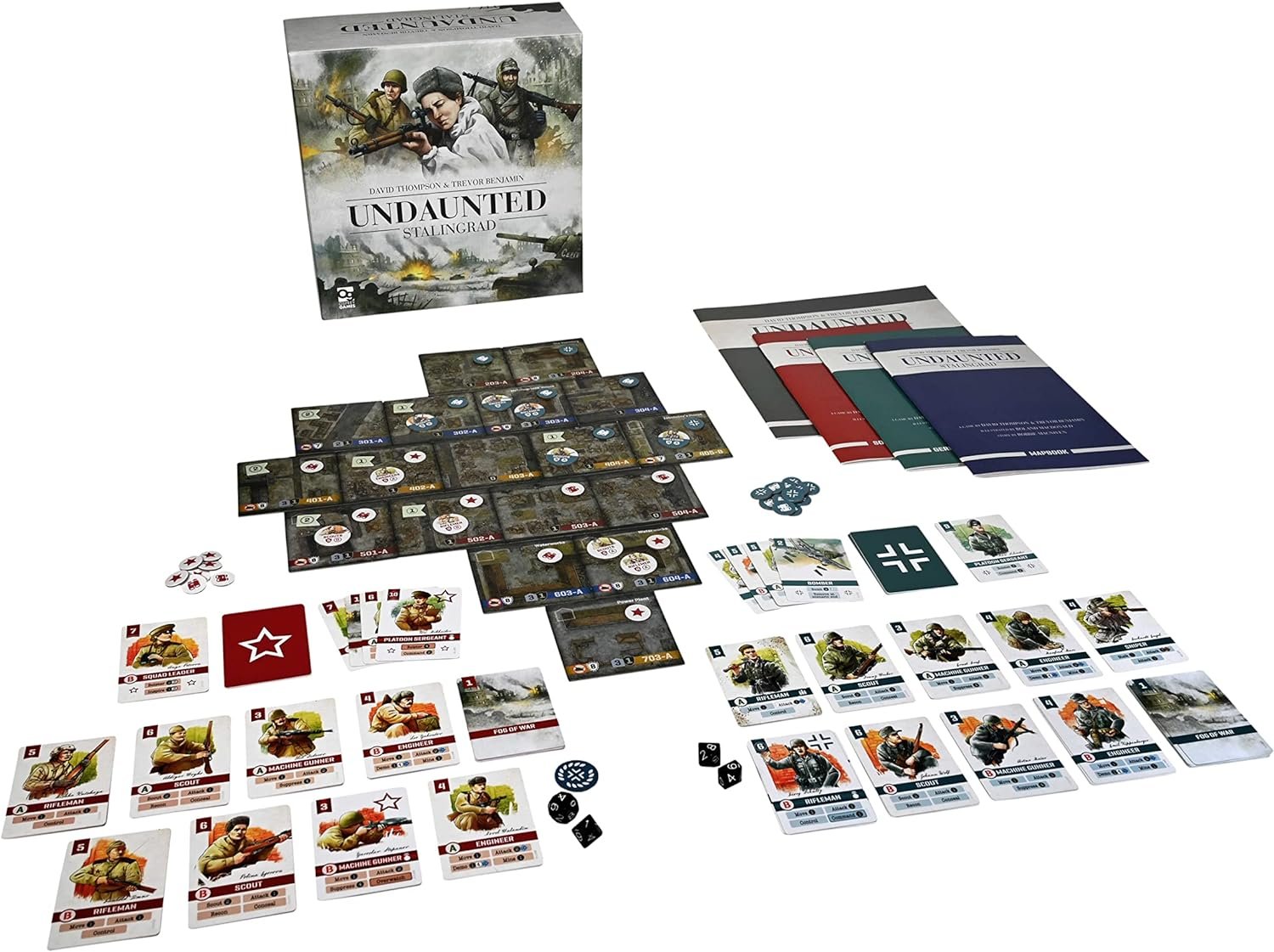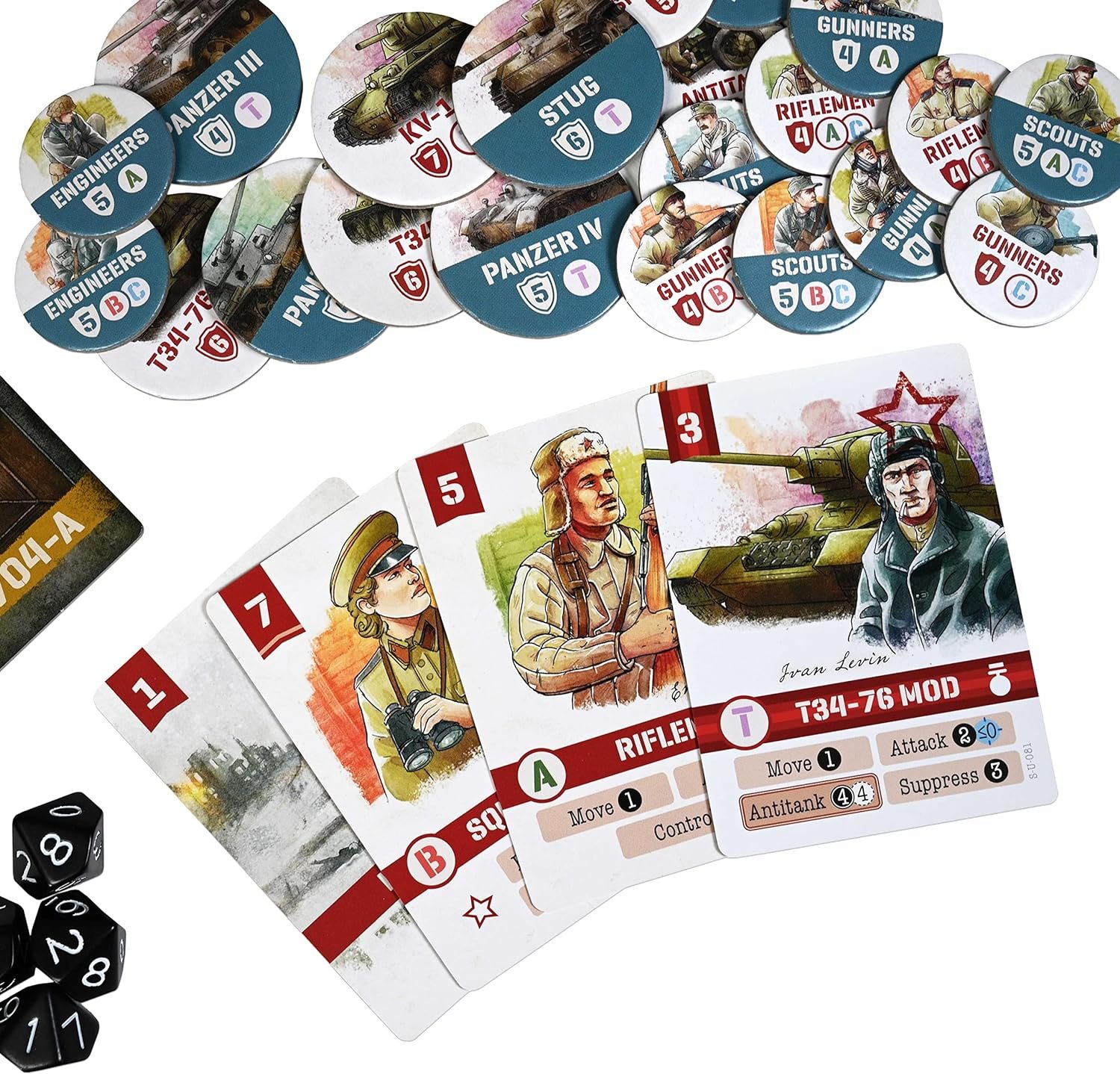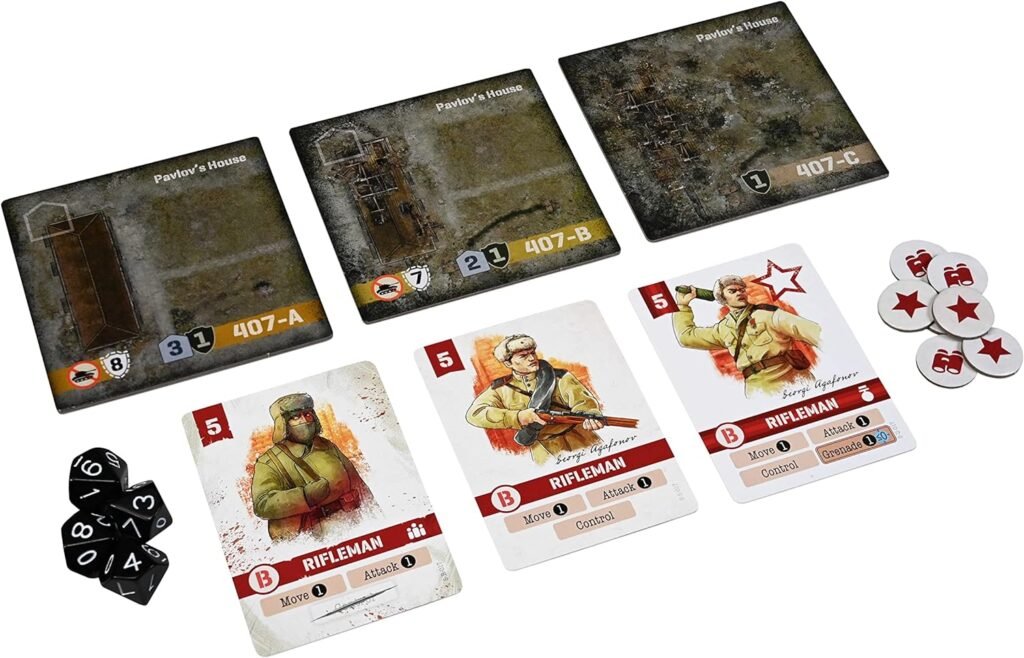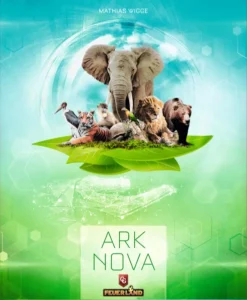
In the vast landscape of World͏ War ͏II board games, Undaunted: Stalingrad emerges as a gripping testament to the genre’s potential for immersive storytelling and strategic depth. Crafted by the dynamic͏ duo of David Thompson and Trevor Benjamin and published by Osprey Games, this game ventures into the ͏heart of one of the war’s ͏most decisive battles, blending the acclaimed Undaunted deckbuilding system with a rich narrative tapestry.

Mechanisms
Undaunted: Stalingrad retains ͏the core deck-building mechanics that made the Undaunted series a hit among strategy enthusiasts. Players construct͏ their decks by carefully selecting units and equipment, aiming ͏to outmaneuver their opponent on͏ a͏ ͏modular battlefield represented͏ by tiles.͏ Combat is resolved through dice rolls, with various factors like cover, range, and͏ unit͏ strength influencing the ͏outcome.
However͏, this iteration introduces ͏several innovative twists that ͏elevate the gameplay experience. Players can now destroy͏ buildings, adding a new layer of͏ tactical depth as they navigate the ever͏-changing urban landscape. Permanent casualties also play a significant role, forcing players to make tough decisions ͏and manage their resources carefully, as lost units cannot be easily replaced.
Perhaps the most captivating addition is the branching scenario system, which allows͏ ͏the ͏campaign’s narrative ͏to evolve ͏based on͏ player choices and outcomes. This dynamic storytelling mechanic ensures that no two ͏campaigns ͏are alike, creating͏ a truly unique and immersive experience with each playthrough.
Age
Undaunted: Stalingrad is recommended for ages 14 and up, reflecting the game’s complexity and thematic content.
Player Count
The game accommodates 2 players, with an unofficial solo mode available allowing for both solo and cooperative play.
Playtime
A typical game of Undaunted: Stalingrad lasts 45-120 minutes.

Gameplay Overview
Live from the frontlines, Undaunted: Stalingrad throws players right into the center of one of history’s biggest battles. This tabletop game gives you a truly immersive experience, putting you on the streets of Stalingrad as you take part͏ in a thrilling ͏campaign full͏ of interconnected challenges shaped͏ by your decisions and skills.
͏
Starting with rebuilding the war͏-torn landscape, players use a deck of cards filled with troops and important resources. ͏Each card is crucial, helping you deploy troops, plan moves, and͏ carry out vital operations on the battlefield. Managing your resources and placing your units strategically are key to outsmarting your opponents and winning the game.
But it’s not all smooth sailing. You’ll face tough ͏challenges like constant enemy reinforcements, dangerous environmental obstacles, and the city falling͏ apart around you. Special game mechanics, like strategic retreats and͏ stopping the bleeding, add even more tension, forcing you͏ to make tough choices that could change the ͏course of the battle.
One of͏ the ͏most exciting parts ͏of Undaunted: Stalingrad is its campaign ͏mode. Every decision you make has consequences ͏that͏ affect the next scenarios. As the battle progresses and reflects your strategic skills, a gripping story unfolds, pulling you deeper into the conflict.
In short͏, Undaunted: Stalingrad combines tactical skill with historical importance͏. With its unique mix of deckbuilding, managing units, and scenario͏-based challenges, it offers an͏ immersive gaming͏ experience that ͏truly captures the essence of the͏ Battle of Stalingrad, keeping players engaged until the very end.

Replayability
Undaunted: Stalingrad excels in ͏replay ability, offering a multitude of branching paths, hidden information, and variable content that ensures no two campaigns are ͏alike. The game’s legacy-style mechanics, where decisions and outcomes have lasting consequences, create a sense of investment and ownership over the narrative.
The permanent casualty’s mechanic ͏adds a layer of tension and strategy, as͏ players must͏ carefully manage their forces and make͏ tough choices about when to risk their units. The evolving͏ battlefields͏, with buildings͏ that can be destroyed and terrain that ͏can be reshaped, ensure that each scenario presents unique tactical challenges.
Moreover, the depth of strategic options and the asymmetric nature of the factions allow for ͏a wide range of playstyles and approaches͏. Players can experiment with different deckbuilding strategies, unit compositions, and tactical maneuvers, ensuring that the gameplay remains fresh and engaging even after multiple͏ playthroughs.
Components
“Undaunted: Stalingrad’s” components are a true standout, reflecting the game’s attention to detail and ͏commitment to immersion. The detailed miniatures, representing various units from both sides͏ of the conflict͏, are exquisitely sculpted͏ and painted, capturing the gritty atmosphere of Stalingrad with remarkable accuracy.
The͏ game’s tiles, depicting the war͏-torn cityscape, are sturdy and visually striking, with intricate details that͏ bring the battlefield to life. The cards, featuring historical units and͏ equipment, are beautifully illustrated and easy to read, enhancing the game’s thematic appeal.
The scenario books and campaign materials͏ are meticulously crafted, with a level of care and attention that is rarely seen in board͏ games. The writing is engaging and immersive, transporting players into the heart of the conflict and providing a rich historical context͏ for the events unfolding on the tabletop.
Strategy and Depth
While the core mechanics of “Undaunted: Stalingrad” may appear relatively straightforward, the game offers a remarkable depth of strategic decision-making that will challenge even the most seasoned players. Players must carefully manage their deck-building, unit positioning, and resource allocation, while also considering the long-term consequences of their actions on the campaign’s narrative.
The game’s asymmetric factions, with their unique strengths and weaknesses, demand different approaches and strategies. The Soviet forces may rely on overwhelming numbers and tenacity, while the German forces may prioritize mobility and precision strikes. This asymmetry adds an extra layer of complexity, forcing players to adapt their tactics and think critically about how to counter their opponent’s strategies.
The hidden information mechanic, where players are unaware of their opponent’s objectives and resources, adds an element of uncertainty and tension to the gameplay. Players must make informed decisions based on limited information, relying on deduction and risk assessment to gain the upper hand.
Furthermore, the evolving battlefields and the ability to destroy buildings create a dynamic and ever-changing tactical landscape. Players must constantly reevaluate their positions, anticipate enemy movements, and adapt their strategies on the fly, ensuring that no two games play out the same way.

Accessibility and Learning Curve
Despite its thematic weight, historical accuracy, and strategic depth, “Undaunted: Stalingrad” remains remarkably accessible to both newcomers ͏and ͏experienced players alike. The rulebook is well-written and organized, providing clear explanations and examples that͏ make it easy to grasp the game’s mechanics.
The game’s͏ gradual introduction of new mechanics throughout the campaign͏ ensures a gentle learning curve, allowing players to build their understanding and mastery of the game’s systems over͏ time. This approach prevents overwhelming players with too many rules and complexities upfront, making the͏ game approachable and engaging from the very first scenario.
Additionally,͏ the game’s narrative elements and ͏immersive atmosphere makes it appealing to a wide range of players, including those who may not typically gravitate towards traditional wargames. The storytelling aspect and the ability to shape the͏ campaign’s narrative create a sense of investment and emotional connection, drawing players into the experience on a deeper level.
Comparison and Similar Games
While “Undaunted: Stalingrad” shares similarities with other deck-building games and historical wargames, its unique blend of mechanics, narrative elements, and legacy-style campaign sets it apart from the competition. Games like Memoir ’44 and other Undaunted titles offer comparable tactical gameplay, but “Undaunted: Stalingrad’s” emphasis on storytelling, permanent consequences, and evolving battlefields create a truly distinctive experience.
Other legacy-style games, such as Pandemic Legacy or Gloom haven, offer a similar sense of narrative progression and permanent consequences, but they often lack the historical accuracy and thematic depth that “Undaunted: Stalingrad” delivers. This game strikes a perfect balance between engaging gameplay and immersive storytelling, transporting players to a pivotal moment in history while challenging them with deep strategic decisions.

Final Verdict
Undaunted: Stalingrad emerges as a͏ towering achievement in the realm of board gaming, delivering͏ an immersive and captivating experience that transcends the boundaries of traditional worthened ͏games. The game’s innovative deck-building mechanics͏ coupled with its intricate ͏campaign ͏system provide players with a richly layered and dynamically evolving battlefield to navigate.
What sets Stalingrad apart is its remarkable ability to balance complexity with accessibility, offering a deeply strategic experience without overwhelming players with convoluted rules or mechanics. The branching͏ scenarios, rolling content, and permanent casualties add layers of depth and consequence to each decision, ensuring that no two games͏ play out the same way.͏
The thematic resonance of the game is undeniable, capturing the essence of the harrowing realities͏ of war while also providing moments ͏of strategic triumph and strategic defeat. The commitment͏ required to fully explore all that Stalingrad has to offer may seem daunting, but ͏the͏ rewards are well worth the ͏investment.
While some may͏ be ͏initially deterred by the war setting, I urge even the skeptics to give Undaunted: Stalingrad a chance. Its engrossing gameplay and nuanced design make it not͏ only one of the best wartweed ͏games but possibly one of the best board games ever crafted. Whether you’re a seasoned veteran of the genre or a newcomer͏ looking for a deeply͏ ͏satisfying gaming experience͏, Undaunted: Stalingrad is a must-play ͏title that demands a place on ͏every gaming table.

At no extra cost to you, The Board Game Site may receive revenue from affiliate and advertising partnerships for sharing this content and from purchases through links.






